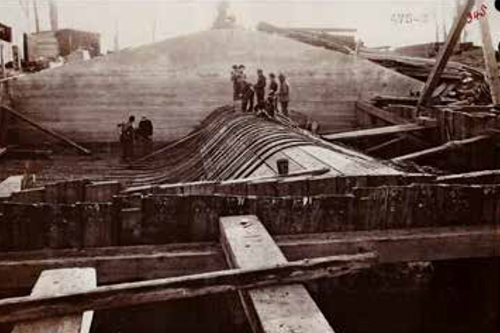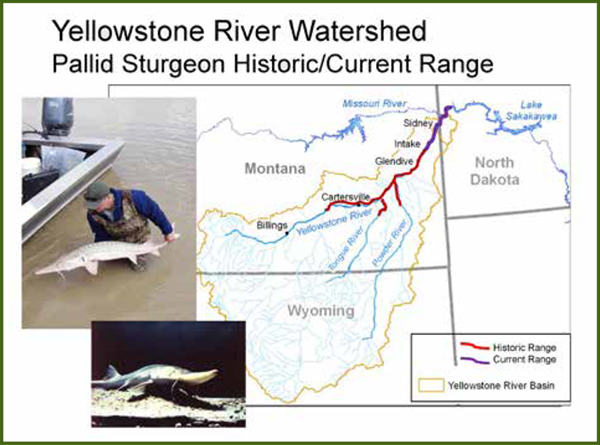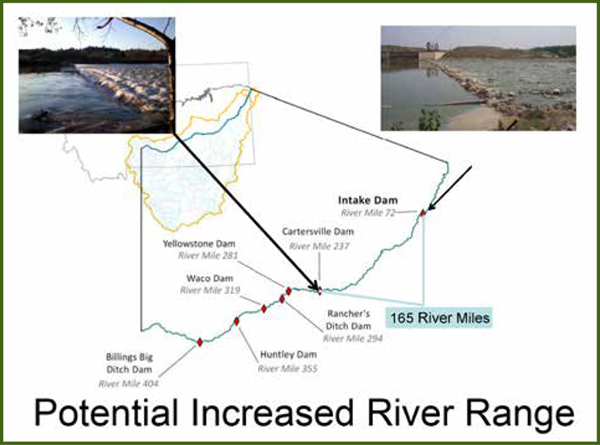- Reclamation
- News & Multimedia
- News Stories
- The Lower Yellowstone Project Accommodating Endangered Species
The Lower Yellowstone Project Accommodating Endangered Species

Lower Yellowstone Diversion under construction.
Located in far eastern Montana, about 70 miles upstream from the confluence of the Yellowstone and Missouri Rivers near Glendive, is the Lower Yellowstone Intake Project (LYIP), a diversion dam and 72-mile canal built to provide irrigation. The intake dam and canal system diverts enough Yellowstone River water to irrigate roughly 58,000 acres of land. The LYIP structures have been around for over 100 years, with construction starting back in 1905, and finished in 1908.
The pallid sturgeon, a fish species which is native to both the Yellowstone and Missouri Rivers, was listed as endangered under the Endangered Species Act in 1990. Several factors contribute to the species listing as endangered, one of which is the construction of dams along its native waterways. Dams inhibit the fish's ability to freely reach spawning areas located in the more western reaches of the Yellowstone.
In the 1990's Reclamation initiated studies to look at reducing entrainment and improving fish passage for the Pallid Sturgeon at Intake Diversion Dam. Studies began in 2005 to 2016, have culminated in a Final Environmental Impact Statement (EIS) issued by Reclamation and the U.S. Army Corps of Engineers (Corps). The EIS reviews several alternative action alternatives to address the need for fish passage past the LYIP diversion dam, including a rock ramp, bypass channel, modified side channel, and multiple pumps. All of these options are presented and reviewed, and pros and cons analyzed through the EIS process.
The preferred alternative to help address the needs of the Pallid Sturgeon would be cost effective; have the lowest operations and maintenance costs; and would not result in significant long-term adverse environmental impacts to the river and surrounding area.
The Corp and Reclamation selected the Bypass Channel Alternative as the most viable option as identified in the EIS. This preferred alternative would allow passage past the diversion dam for the Sturgeon, but also be the most cost effective to construct and also maintain and operate in future years, continuing to divert much needed water to farmers and ranchers.
The Final EIS prompts a decision, after a comprehensive review has been made of the FEIS, with a Record of Decision (ROD) issued on December 5, 2016. The ROD, if unchallenged, will signal the start of the final stage for the Corps and Reclamation to move forward with the next phase: to modify the Yellowstone River channel in a way to ensure the survival of the Pallid Sturgeon, and agriculture in eastern Montana.


Published on January 11, 2017

